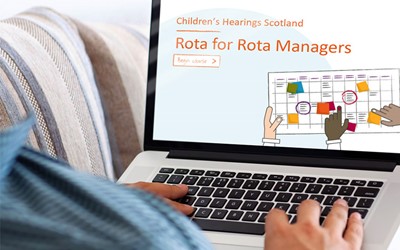Why do you need an Instructional Designer on your eLearning project team?
Have you ever started a project, got all the way to the end, and realised you needed to start again because something fundamental wasn't right? Well, Instructional Design is all about avoiding that heartache.
Posted 26 January 2022
Instructional Design is an important aspect of eLearning as we want to deliver a better experience for learners and good Instructional Design helps learners retain knowledge. After all, that’s the main goal. Your learners need to be able to apply knowledge and demonstrate their skills competently and effectively.
What is Instructional Design for eLearning?
Instructional Design is made up of a few different components:
- A learner-centered approach
- A good understanding of the content and the goals
- Using learning theories to transform your content into the bones of the course.
Let’s look at each of those in more detail.
Know your personas for learning
To create engaging content, you need to know who will be reading it. That's why a target persona for your learners is so important! It helps visualize them as people and provides insight into their demographics such as age or gender - which can influence how they learn. The more refined these personas are – e.g. including preferences of activities outside education too - the easier creating useful material becomes.
A learner-centred approach
For us to connect with the learning you provide, we need to know who your learners are and their state of mind. By understanding who they are, what they want to achieve, and their background we can customize the learning experience to them.
Here are some things you can do to help with this initial stage:
- Have a clear outline of who your audience is.
It’s worthwhile noting that while you may want to reach as wide an audience as possible, this can make it complicated and reduce its usefulness for the learner.
Initially, it’s usually better to target as specific an audience as possible. This means the content can be tailored precisely for the learner and ensure it is means something to them. - Understand what your audience should already know.
It can be tempting to overexplain every concept that appears in your learning. However, if your audience already knows these concepts like the back of their hand, they might start skimming the rest of the content!
Understanding what they already know means we can check the relevance of every bit of content. We can always add a glossary or links to concepts at the end of the course, which gives the learner more autonomy.
Understanding the content and goals
We also need to know what the learning is about, and what your ideal outcome is.
Here are some things to consider:
- Decide on what you need your learner to be able to do.
This is what it’s all about. We need to set clear goals for your learner so they come out of the learning equipped with the knowledge and skills they require.
It is important to set measurable learning outcomes so we can clearly measure if the learner meets them at the end of the course. This is something we can help you with. - Find your focus.
Your SMEs may have been working in their role for a while and will know a lot more about their specialized area than a short course’s worth. That’s why it’s important to keep your focus narrow.
Once your topic is chosen, you need to figure out what the learner must know, what would be nice for them to know, and what is not quite relevant enough.
This may all seem like a lot of things for you to think about, but this is where we come in. We are happy to look over your content, dissect what we have and what it would allow the learner to achieve, and discuss this with you. You are not alone in this journey.
Speaking of content – we can take it in any form. You may have a Word document for a manual, a PowerPoint slideshow used in training with some speaker notes, or an existing course you want to improve upon. Whatever format your content is in, we can work with it.
Transforming your content
Whatever the format of the content, we can transform this into a simple, easy-to-understand storyboard that will suit the learner, the authoring tool, and any accessibility needs. We adopt the most appropriate learning theories from the ADDIE Model to the SAM model, this depends on the needs of your learners and their learning objectives as well as the subject matter of your course.
Once the approach has been decided and discussed we use a multitude of different interactions for the benefit of the learner and bring it to life. There will be a lot of communication at this stage with both the Instructional Designer and the SME to ensure the learner’s needs are always at the forefront of our minds.
Want to learn more on how Instructional Design can help?
We're eLearning Instructional Design experts with years of experience developing creative and engaging learning experiences. We'll work with you to understand your vision and goals, and then help you bring your ideas to life. So don't hesitate to get in touch - we're here to help you create eLearning that's both effective and enjoyable!
Recent Posts
Benefits of Online Assessment for Awarding OrganizationsDriving your performance and compliance
Enhancing compliance through performance management and digital learning solutions
10 Reasons Why You Need A Digital Learning Solution in Your Workplace
Mastering remote & hybrid learning with analytics


